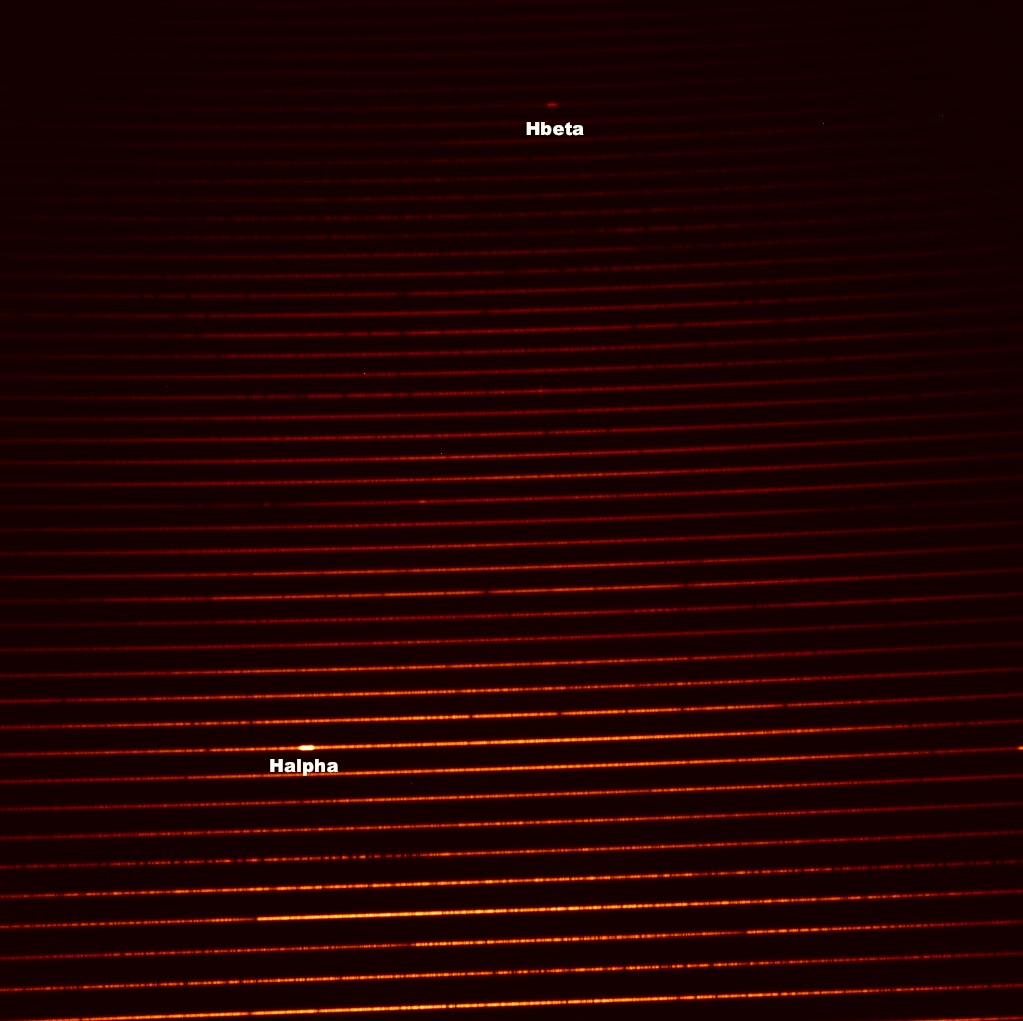Resources
 Part of the Oxford Instruments Group
Part of the Oxford Instruments Group
Expand
Collapse
 Part of the Oxford Instruments Group
Part of the Oxford Instruments Group
The Alfred-Jensch telescope (AJT) at the Thüringer Landessternwarte Tautenburg is the largest telescope in Germany. It is a versatile telescope which can either be used for wide-field imaging in the Schmidt mode, or as a high-resolution Echelle spectrograph in the Coudé mode.
An Echelle spectrograph is a spectrograph that allows you to obtain spectra of high spectral resolution which also has a wide spectral range. This is achieved by folding the spectrum so that it fits on a square detector. Such instruments are the backbone of stellar astronomy because they allow us to determine key stellar parameters like the temperatures, abundances, and the velocities along the line of sight of stars. Because the spectral lines originate from different heights in the stellar atmosphere, it is possible to study the physical conditions at different layers. Given how important spectroscopy is for astronomy, it is not surprising that most of the observing time is devoted to this type of observations. The AJT is equipped with an Echelle spectrograph that has a resolution of l/Dl=73000 and is located at the Coudé-focus of the telescope.
For spectroscopic observations, a very low read-out noise, high sensitivity and very low dark current is essential. We thus equipped the Echelle spectrograph with an Andor iKon-L 936 camera that has 2kx2k pixels. This camera gives us a very significant improvement over the 2kx2k CCD that was previously used. Fig.1 shows a spectrum of the cool, but very active star AD Leo obtained with the Andor camera. This star is 26 times fainter than the faintest star that can be seen by eye. Although this star is so faint, the spectrum obtained is of very high quality, demonstrating the high sensitivity of the camera. The blue part of the spectrum is at the top, the red part at the bottom of the image. The emission line at the top of the spectrum is Hb at 486 nm and the emission line at the bottom is Ha at 656 nm. These two lines originate in the Chromosphere, a layer that is a few thousand km above the Photosphere. Although the Chromosphere is above the Photosphere, it is hotter than the latter, resulting in emission lines. The forest of dark, perpendicular absorption lines mostly originates from the Photosphere of the star, except for a few absorption lines originating from the Earth’s atmosphere. Using Hb and Ha we can, for example, study the sudden release of energy in flare-eruptions on the star. Studying the very energetic flares on active stars like this one is important, because such events happen only rarely on the sun, but if they do, they can have quite dramatic effects like the blackout in Quebec, Canada, in March 1989.

Fig.1: Echelle spectrum of AD Leo obtained with the Echelle spectrograph of the Alfred-Jensch telescope and the Andor iKon-L 936 camera. The spectrum is folded. The blue part of the spectrum is at the top, the red part at the bottom of the image. Dark absorption lines from the Photosphere and the emission lines Hand Hare clearly seen.
One of the applications of a spectrograph is also to detect planets orbiting other stars than the sun. This is done by measuring very precisely the periodic change of the velocities of stars towards and away from us. Such measurements are challenging because they require very precise measurements of the position of the spectral lines. Using sophisticated methods, shifts as small a 0.002 pixel have been detected. A direct comparison between the new and the old camera has shown that only about half as many observations are needed with the Andor camera to obtain similar results as with the old camera. The Andor iKon-L 936 camera thus gives a very significant gain in performance. Planets of stars that are one hundred times fainter than the faintest star that can be seen by eye are now within reach of our telescope.
Date: Feb 2022
Author: Dr Eike Guenther
Category: Application Note
